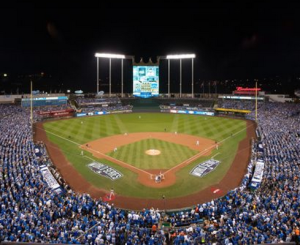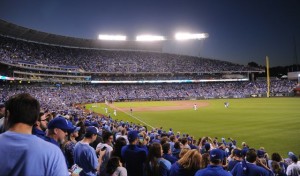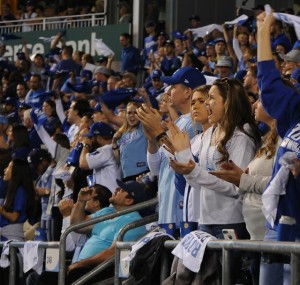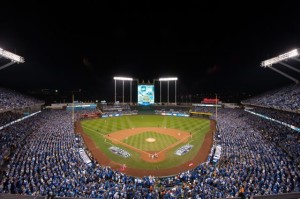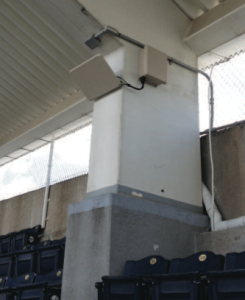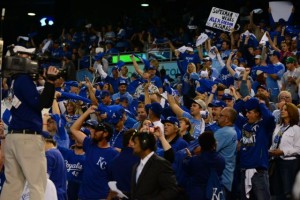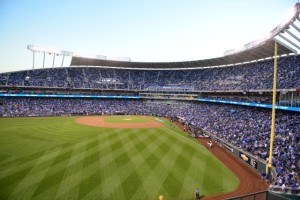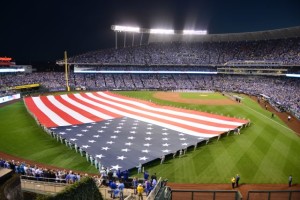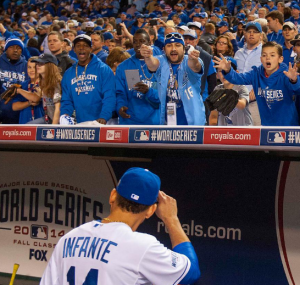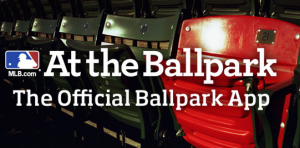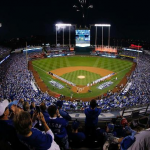Sprint has made the most noise this week, with claims of CA demonstrations at Soldier Field in Chicago and Kansas City’s Kauffman Stadium that (they said) showed Sprint devices bonding three different frequency channels to hit download speeds of 230 Mbps, a score way off the charts for any existing stadium networks. (The fastest Wi-Fi and cellular speeds we’ve seen in our short history of stadium tests, by comparison, are in the 60 Mpbs range.) Verizon made a similar announcement about CA being put in across its network, without specifying if the service would be available in stadiums. Other carriers, including AT&T and T-Mobile, are also exploring use of the CA technique. At the very least, some lucky users with newer devices may see leaps in performance thanks to CA deployments, a good thing on any level.
But our bigger question — which hasn’t been answered in the press releases and hasn’t (yet) been answered in email questions to Sprint or Verizon — is whether or not CA will help with overall network capacity, which to us seems to be a more pressing problem at most stadiums as opposed to simple download speeds. I mean, demos are great and it’s cool to see what the upper limits are for one device; but it’d be more impressive if Sprint could guarantee that 230 Mbps mark to every device in the park, should everyone there have a Sprint phone with the capability to perform the CA trick (not all devices in the market today can do so).
Finally using the Clearwire spectrum
What’s also not completely revealed in the press releases is what kind of gear is necessary on the back end of the network to make CA work, and whether or not it makes economic sense to have that gear placed inside stadiums to enable the technique for as many fans as possible. While we understand the basic premise probably better than most (since in a former life yours truly spent several years following and analyzing the Clearwire spectrum holdings at 2.5 GHz) it’s not clear if CA solves any congestion problems, especially for carriers other than Sprint, who only have a limited amount of licensed spectrum in each market they serve.
(Without getting too deep into spectrum geekiness, Sprint on paper probably has more room to grow in the CA space since its 2.5 GHz holdings dwarf other carriers’ licensed bands; but to make use of that spectrum, you need customers with devices that can use that spectrum, and enough cash for a wide network buildout, both of which Sprint may be challenged to find.)
As we understand CA, by bonding channels you can make one device faster since it has more aggregate bandwidth to work with. But it’s not clear that using CA in a stadium environment would make the overall situation any faster than say, three phones using single channels by themselves. Also, since you can’t create new bandwidth, if one phone starts tapping three different channels doesn’t that actually leave less room for other devices that may want to also use those channels? Perhaps with CA the connections would be faster and wouldn’t last as long, thereby freeing up spectrum for other devices; again, there’s not a lot of information yet on the capacity side of the equation, especially in crowded stadiums or at big events where bandwidth needs escalate. If there are any cellular wizards in the audience with more knowledge of the situation, feel free to chime in.
We did get an email response from our old friend John Saw, formerly of Clearwire and now chief technical officer at Sprint. Here’s his explanation of why CA is a good thing for stadiums:
Essentially, sites with bonded channels will drive higher capacities. This will be especially timely and helpful in crowded spaces like Soldier Field where there are surges in capacity demand during live sporting events. Sprint customers with CA enabled phones will enjoy 2X (in the case of 2CA) or 3X (in the case of 3CA) their download speeds, which means that they will get a better data experience with a bigger pipe. But wait – CA will lift all boats and it will also benefit those Sprint customers who have not upgraded to CA enabled phones yet. While they may not enjoy the higher peak speeds enabled by CA phones, their phones will have access to more network resources which means they will also have a better data experience, with no stalling or without that dreaded “windmill effect” in a crowded stadium.
I kind of understand what Saw is talking about here, but I am still having a problem with the math that says all boats will be lifted through the use of CA. Plus, experience and interviews have taught us that across the country, Sprint is behind Verizon and AT&T when it comes to DAS deployments inside stadiums; and, it’s not clear (and hasn’t been answered) whether or not CA can work over a neutral-host DAS deployment where carriers share antennas and other infrastructure.
From an industry-wide standpoint, CA seems like a great thing for all cell phone users since as it progresses devices should be able to utilize whatever bandwidth is around to make performance better. It’s also good to see more technology advancements made on the network side of things, since infrastructure needs all the help it can get to keep up with devices. But right now, we’re not sure if CA is the answer to any of the capacity problems stadium network operators face. Anyone with views that can expand the explanation, feel free to hit the comments section below or send me an email to kaps at mobilesportsreport.com.
